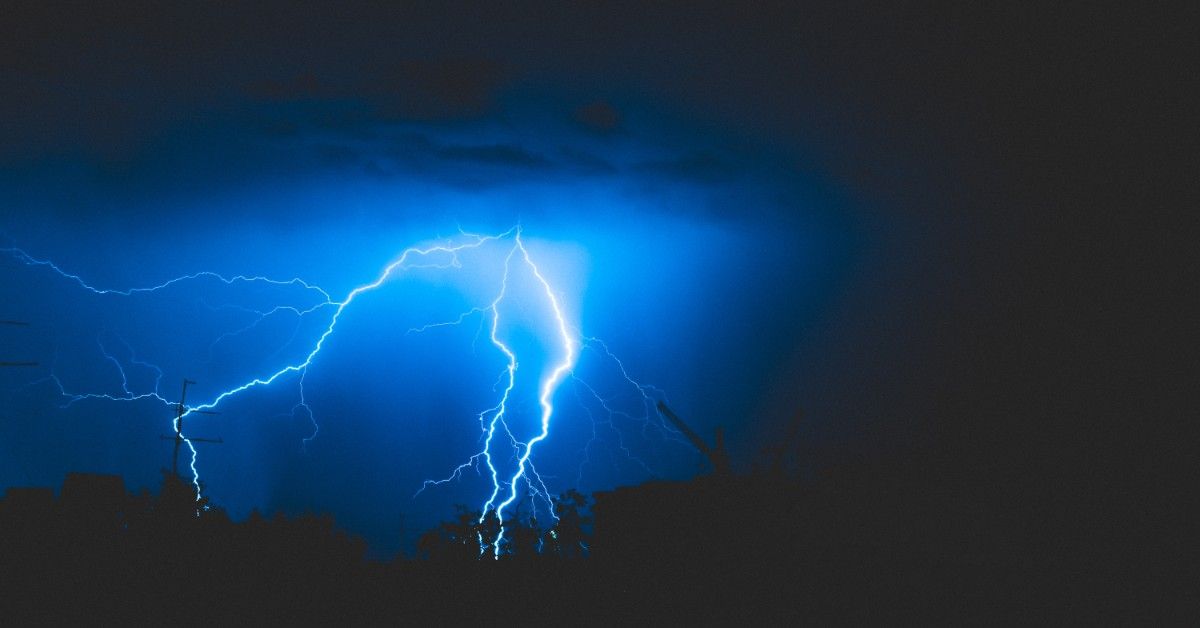electricity! Seeing as how it’s in our name, ElectricMasters, we thought we might take the opportunity to dispense a bit of industry knowledge for our readers.
As Cincinnati’s top electricians, most of our time is taken up by handling the commercial and residential needs in our service area, which extends into Northern Kentucky, we’d like to add. However, any time we get the chance to pound out a blog about “DIYing” some electrical work (and why it’s probably a bad idea), why HVAC maintenance is so important, or something related, we’ll gladly take the time to do so!
While most of our blogs are practical in nature, today’s is more entertaining in its intent. So sit back, relax, and enjoy this blog with fun facts about electricity and electrical work from Yours Truly here at ElectricMasters!
INTERESTING FACTS ABOUT ELECTRICITY
- Electricity travels at faster than 186,000 miles per second. If you didn’t know, that’s the speed of light.
- Your body has its own electrical system: the heart. The heart contains a specialized group of cells which generate their own electricity, effectively causing the heart to beat.
- Did you know that static electricity is the responsible agent in print and photocopying documents? It’s static electricity which attracts the toner or ink to the paper. The same thing happens for other devices as well — including air conditioners when the air filters capture dust!
- Most people will tell you that Benjamin Franklin was the first person to “discover” electricity, but this is far from the truth. Franklin did conduct several experiments which served to establish a more concrete understanding of the connection between lightning and electricity, but it was the ancient Greeks who noted that when amber and fur are rubbed together, they are attracted to one another. This, as you might be able to guess, is static electricity. The Greeks discovered this some 600 years before the Common Era!
- Similarly, it was not Thomas Edison who invented the first light bulb. He did invent the first light bulb that stayed illuminated for longer than merely a few seconds. This isn’t to say that Edison wasn’t influential; his research and discoveries informed the invention of thousands of products and applications, many of which are essential to how society operates today.
- Electricity can come from many sources, but perhaps the most interesting source can be found in Albertville, France. It is there that the people make electricity from Beaufort cheese. That’s right folks, cheese. You see, the thing about Beaufort cheese is that it doesn’t use whey in its production. Instead, bacteria are added to remove the whey, which in turn releases a by-product of biogas. The gas is utilized to heat water which creates energy. To be precise, the water gets up to 194 degrees Fahrenheit, which produces 2800 MWhr / year of electricity. That’s worth a trip to Albertville in its own right!
- LED bulbs are much more efficient than conventional light bulbs. In fact, they use just about one-sixth of the electricity when compared with traditional light bulbs. They cost roughly a quarter as much to use and last a whopping 40 times (!) longer.
- So, someone, somewhere, out there, took the time to calculate how much power it would take to power a human being for a day based on a calorie to Joule’s conversion rate of 1 to 4.2. It would take 648 AA batteries to make it 24 hours!
- You can’t get electrocuted and live to tell the tale. Why? Electrocution is fatal by definition, so be sure to amend your language to something like, “I was nearly electrocuted when I was a child and messed with that outlet.” Hopefully you don’t have to tell too many stories of that nature, however!
- Speaking of electrocution, have you ever thought about why it is that birds don’t get killed when they sit on a power line? Surely you have seen one or two dead birds hanging on a power line at different times, so what exactly is happening here? It has to do with electrical currents. If a bird is only sitting on one power line, it will be fine. It’s when a body part touches a separate line that causes issues. Doing so creates a circuit, which in turn causes electricity to flow through the body of the bird. This, as you can probably guess, results in electrocution, which as we now all know is fatal.
- Pedal-powered cinemas exist in Africa, out of necessity. One person sits down on a cycle and goes to work so that everyone else can watch a film which hundreds can enjoy. This is used in schools in Africa where they do not have electricity.
- Google, that hideous beast, actually doesn’t use too much in terms of energy. It accounts for .013 percent of the world’s energy usage, which is still fairly significant when you realize that that is enough to continuously power 200,000 homes.
- Coal still produces the most energy in the world. But how does it happen? Coal has to be burned in furnaces which heat up water. The heated water produces steam which spins turbines. The turbines are attached to generators which convert the locomotion into energy ready to be distributed.
- This one is a bit discouraging: idle power uses more electricity than all of the solar panels in America combined! In the typical home in the United States, some 75 percent of the electricity used to power electronics is used while the products are turned off or idling. For instance, the Sony PlayStation 3 uses roughly 200 watts — when it’s idle and active.
- Energy wasn’t always called energy, in the modern sense anyway. It was Thomas Young who coined the term as it relates to power usage. It replaced the traditional term of the time, vis viva, which meant “living force.”
- We’ve established the fact that it takes quite a bit of energy to meet the global demands of earth’s population — but on the other hand, that “quite a bit” is relative; enough sunlight hits the surface of the earth every minute to satisfy the world’s energy needs for an entire year!
- Here’s our final fact for the day: a volt is the unit of measurement used to describe electric potential energy. Just a single spark might measure up to 30,000 volts, while a bolt of lightning can reach up to 3 million. One bolt of lightning could light up over 200,000 homes!


